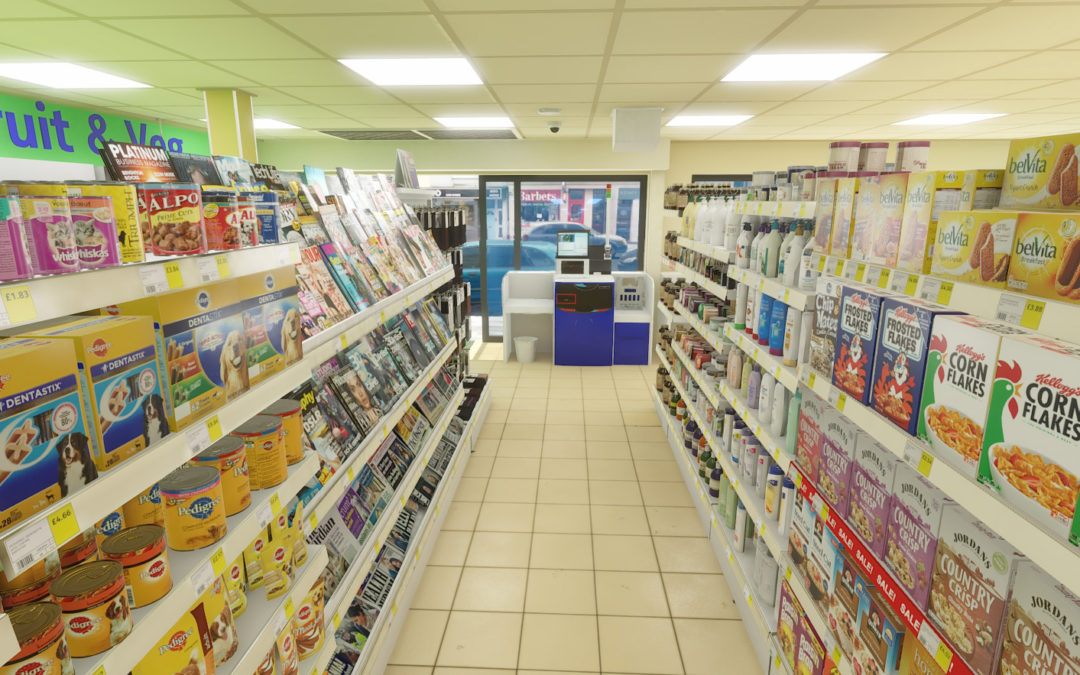We meet a lot of people to discuss the immersive benefits of virtual reality in research. In the first meeting prior to our demo session, someone quite often says “Yeah I’ve tried VR” or “We’ve done VR before”. We then give them a VR headset (Head Mounted Display) and they enter an interactive, immersive environment e.g. walk down a supermarket aisle and place products in a basket. They leave the experience saying how ‘present’ they felt in the supermarket and recognise their previous VR experience wasn’t virtual reality after all.
The confusion about screen-based ‘virtual reality’ research tools (e.g. computer generated simulation of a supermarket on a computer screen) exists because they’re incorrectly promoted as virtual reality. We therefore feel compelled to clarify the significant differences. Virtual reality requires a Head Mounted Display (HMD) to immerse respondents and make them feel ‘present’ in the supermarket so researchers can make confident decisions about their purchase behaviour. ‘Presence’ is the sense of ‘being there’ and VR induces this through a combination of illusions, including the place and plausibility illusion, which provides a sense of actually being in a virtual environment.
This sense of presence is hugely important to researchers who want to measure respondent behaviour, which is as real as possible, so they can accurately predict real world behaviour. Screen-based systems – where a respondent navigates through a store with a computer mouse and looks at shelves on a computer screen – doesn’t realistically simulate a trip to the shops. The same applies to CAVE systems where respondents look at a supermarket which is projected onto the walls of a room. Academic studies which compare VR (using a HMD) to ‘VR’ (using a screen) evidence the real benefits of virtual reality – with the HMD group feeling significantly more present in their environment.
Our virtual reality products are either 360 video or CGI (Computer Generated Image) with the latter allowing respondents six degrees of freedom (6DOF) within a 3D space. The virtual space changes according to head orientation (roll, yaw and pitch) and physical position in the space (right/left, up/down and forward/back). It behaves the same way it does in the real world so respondents view products from different angles and, if they drop them, natural physics like gravity take over. The depth and movement within a 3D space provides an absolute sense of being in a supermarket. 6DOF used to rely on outside-in tracking (with sensors in the room tracking the headset and controllers) however Facebook’s new Oculus Quest makes things more mobile with inside-out tracking in a stand alone VR headset.
360 video provides three degrees of freedom (3DOF) so your position is fixed and the virtual environment changes according to head movement. Whilst respondents feel present, they can’t move around the space and interact (naturally) with products. Light-field cameras take a 360 scan of an environment and, unlike standard 360 video cameras, they capture depth so the virtual world responds to your position in space. Talking of space, we recently tested a 360 light-field experience of a space shuttle where the view of stars outside the cabin move as you move, the buttons behind the joystick came into view as you look behind it. This gives a sense of parallax (the effect that gives depth and realism from seeing a scene from two eyes rather than one). The effect of presence, sitting in the space shuttle, is very strong and enough to feel like you’ve been to space.
Coming back to Earth, this sense of presence is incredibly powerful for researchers. Screen-based systems offer predictable outcomes but immersive technology offers real outcomes. Psychological evidence points to the sense of presence prompting real world behaviour and therefore helping researchers make confident decisions. Studies have proven that virtual reality in research increases realism by as much as 42% (versus traditional media) and respondent enjoyment also increases (up to 68% compared to online research). In short, virtual reality in research requires a Head Mounted Display to be immersive and researchers get better data when respondents feel present 🙂
Check out VR retail behaviour or get in touch to integrate virtual reality into your research..


Recent Comments